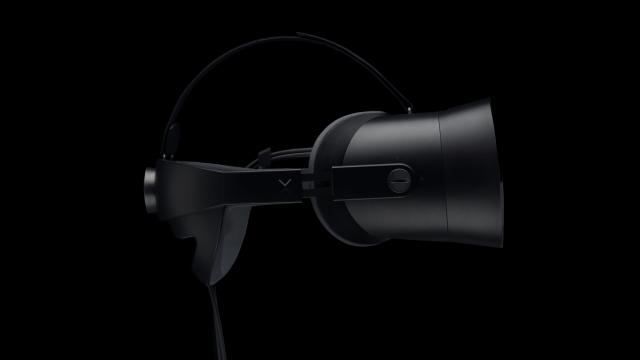Announced and launched today, Varjo’s enterprise-focused VR-2 brings support for SteamVR content and improves on the headset’s ‘bionic display’, which delivers ‘retina’ resolution at the center of the field of view. A variation called the VR-2 also offers integrated hand-tracking via Ultraleap (formerly Leap Motion).
Varjo launched its first headset, the VR-1, only back in February, but the company is already releasing the next iteration. Aimed at high-end enterprise customers, the VR-2 offers an improved ‘bionic display’, which the company says offers a better blend between the central ‘focus display’ (which offers ‘retina’ resolution of 60 PPD) and the larger ‘context’ display (which is much lower PPD but expands the headset’s FOV to an immersive 87 degrees).
The above through-the-lens photos, captured by Varjo, are an accurate portrayal of the difference in visual fidelity between Vive Pro and Varjo VR-2, but only for the center of the field of view (which is the only portion shown here). Use the slider to compare.
We’ve been impressed with Varjo’s execution of the novel display architecture, calling the company’s prior headsets a “breathtaking preview of VR’s future.”
Varjo VR-2 Improvements
While the resolution of the VR-2 is identical the VR-1 (1,920 × 1,080 focus display, 1,440 × 1,600 context display), Varjo says the improvements in visual quality come from an improved optical combiner, enhanced calibration between the focus and context displays, and a diffuser which reduces the screen door effect on the context display. The company says the result is a smoother blend between the two different displays, making for a more natural appearance and a slightly larger area of the ‘retina’ portion of the view.

The VR-2, which has built-in SteamVR tracking, will now also ship with support for SteamVR content. This will also apply to the original Varjo headsets.
Varjo clarified that only its native API currently supports independent resolution rendering of the high density focus display and the lower density context display, while SteamVR content only supports a single resolution. In order to not tax the GPU too hard, SteamVR content will render on the headset around 40 PPD, though users can optionally crank this up to 60 PPD if they have the GPU horsepower.
Varjo VR-2 Pro with Hand-tracking
Alongside the VR-2, Varjo will also offer a VR-2 Pro which will include integrated hand-tracking via Ultraleap (formerly Leap Motion), as well as a removable counterweight for the back of the headset to achieve better balance. The VR-2 Pro also ships with a 10 meter cable while the VR-2 ships with a 5 meter cable.
All Varjo headsets include eye-tracking, and the company says that new and old headsets alike will benefit from faster and more accurate eye-tracking calibration; the company claims its eye-tracking is the best in any VR headset. The video below shows both eye-tracking and hand-tracking in action on the VR-2 Pro:
Varjo VR-2 and VR-2 Pro Price and Release Date
Still aimed at high-end enterprise customers, the VR-2 is priced at the same $5,000 as the original. Meanwhile, the VR-2 Pro costs $6,000. That’s before adding base stations for tracking, controllers, and the mandatory $800 support license. Both headsets are available starting today.
Earlier this year Varjo began offering the the XR-1 dev kit, which is a variant of the VR-1 but with high-quality cameras on-board for passthrough augmented reality applications. The company has not announced an XR-2 at this time, but we expect it will come in due course.
Update (September 15th, 4:06PM ET): A prior version of this article incorrectly quoted the VR-2 price at $4,000 and the VR-2 Pro at $5,000; this was $1,000 less expensive than the actual prices which have been corrected in the article above. Thanks to Tony “SkarredGhost” for bringing this to our attention.







